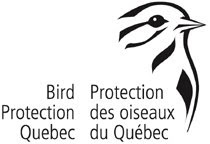Saturday, October 26– samedi 26 d'octobre
Montréal: Parc-nature de l'Île-de-la-Visitation
Leader: Sheldon Harvey 450-462-1459 - e-mail
Time & Meeting location: 8:00 a.m at the welcome centre of the park
Driving instructions: From Highway 40 (Metropolitan Blvd) take the Papineau exit. Head north on Papineau to Henri Bourassa. Turn right (east) on Henri Bourassa and turn left on Rue de Lille. Turn right onto Gouin and left into the parking area. There is a parking fee of $9.00, but there are generally a number of free parking spots on various streets directly facing the park entrance. This will be a half-day walking outing.
8h00 De l’autoroute 40 (boul métropolitain) prendre la sortie Papineau nord jusqu’à Henri Bourassa. Tourner à droite (est) sur Henri Bourassa et tourne à gauche sur Rue de Lille. Tourner à droite sur Gouin jusqu’au stationnement du parc. Stationnement : 9,00$ mais il-y'a generalement stationnement gratuit sur quelques rue en face du parc. C'est une sortie de demi-journée.
Driving instructions: From Highway 40 (Metropolitan Blvd) take the Papineau exit. Head north on Papineau to Henri Bourassa. Turn right (east) on Henri Bourassa and turn left on Rue de Lille. Turn right onto Gouin and left into the parking area. There is a parking fee of $9.00, but there are generally a number of free parking spots on various streets directly facing the park entrance. This will be a half-day walking outing.
8h00 De l’autoroute 40 (boul métropolitain) prendre la sortie Papineau nord jusqu’à Henri Bourassa. Tourner à droite (est) sur Henri Bourassa et tourne à gauche sur Rue de Lille. Tourner à droite sur Gouin jusqu’au stationnement du parc. Stationnement : 9,00$ mais il-y'a generalement stationnement gratuit sur quelques rue en face du parc. C'est une sortie de demi-journée.






